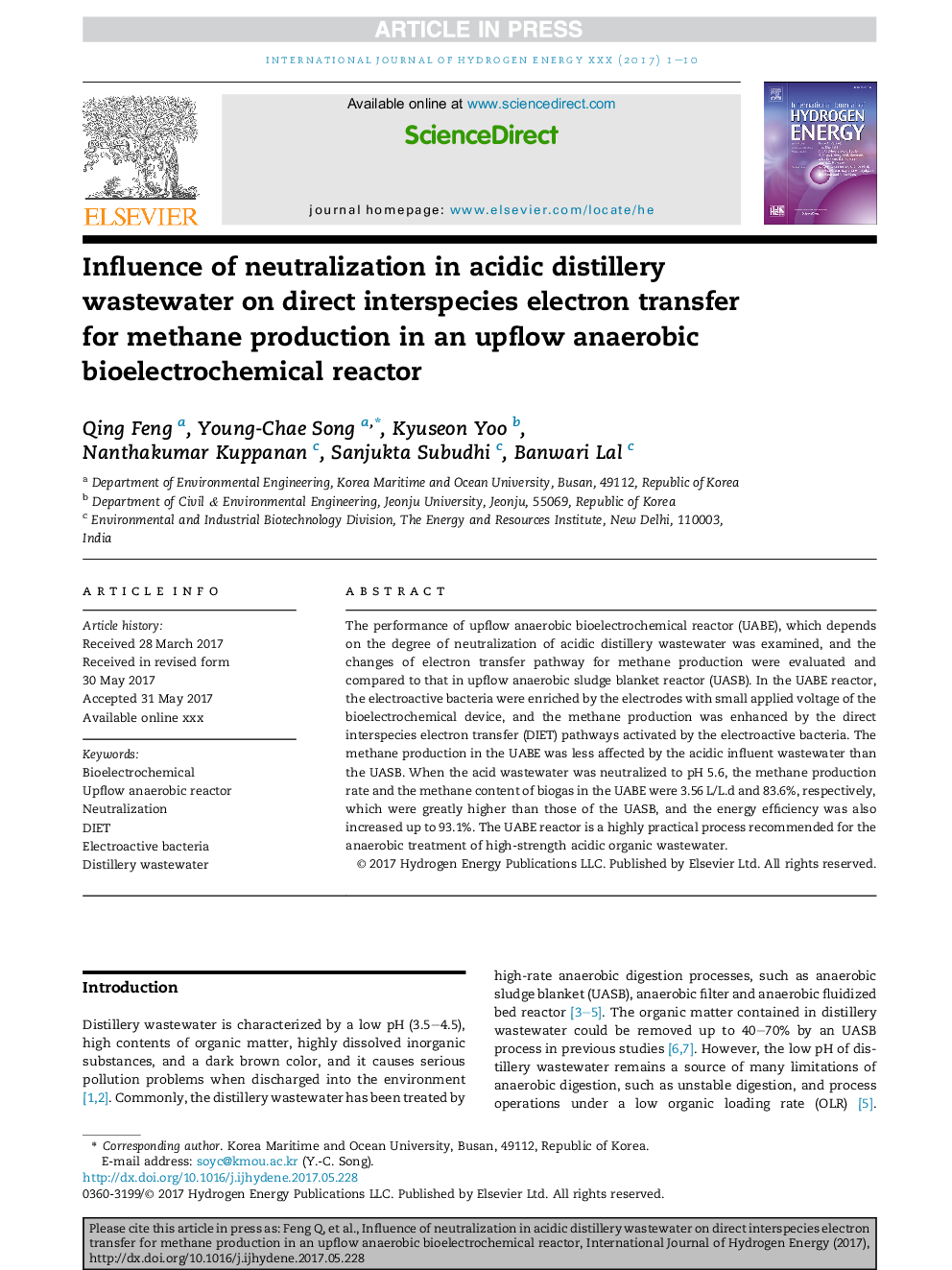| Article ID | Journal | Published Year | Pages | File Type |
|---|---|---|---|---|
| 7709713 | International Journal of Hydrogen Energy | 2017 | 10 Pages |
Abstract
The performance of upflow anaerobic bioelectrochemical reactor (UABE), which depends on the degree of neutralization of acidic distillery wastewater was examined, and the changes of electron transfer pathway for methane production were evaluated and compared to that in upflow anaerobic sludge blanket reactor (UASB). In the UABE reactor, the electroactive bacteria were enriched by the electrodes with small applied voltage of the bioelectrochemical device, and the methane production was enhanced by the direct interspecies electron transfer (DIET) pathways activated by the electroactive bacteria. The methane production in the UABE was less affected by the acidic influent wastewater than the UASB. When the acid wastewater was neutralized to pH 5.6, the methane production rate and the methane content of biogas in the UABE were 3.56Â L/L.d and 83.6%, respectively, which were greatly higher than those of the UASB, and the energy efficiency was also increased up to 93.1%. The UABE reactor is a highly practical process recommended for the anaerobic treatment of high-strength acidic organic wastewater.
Keywords
Related Topics
Physical Sciences and Engineering
Chemistry
Electrochemistry
Authors
Qing Feng, Young-Chae Song, Kyuseon Yoo, Nanthakumar Kuppanan, Sanjukta Subudhi, Banwari Lal,
